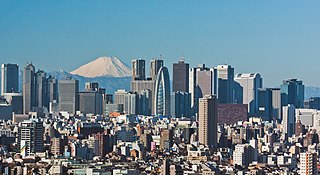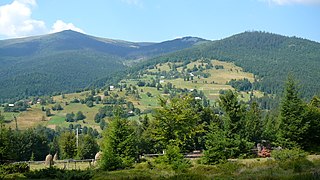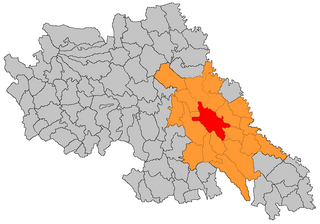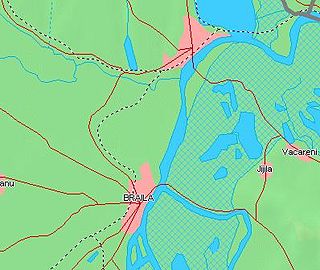This article needs additional citations for verification .(October 2015) (Learn how and when to remove this template message) |
| Târgu Mureș metropolitan area | |
|---|---|
| Metropolitan area | |
| Coordinates: 46°32′N24°33′E / 46.533°N 24.550°E Coordinates: 46°32′N24°33′E / 46.533°N 24.550°E | |
| Country | |
| County | |
| Central Municipality | Târgu Mureș |
| Functional | 2005 |
| Area | |
| • Total | 656.29 km2 (253.39 sq mi) |
| Population (2011 census) | |
| • Total | 209,532 |
| • Density | 314.6/km2 (815/sq mi) |
| Time zone | EET (UTC+2) |
| • Summer (DST) | EEST (UTC+3) |
| Postal Code | 540xyz1 |
| Area code(s) | +40 x652 |
| Website | http://www.tgmures-metropolitan.ro/home |
The Târgu Mureș metropolitan area is a metropolitan area in Târgu Mureș, Romania. It was founded in 2005. It has a population of 209,532 as of the 2011 census. It is Romania's only metropolitan area where Hungarians form the largest ethnic group, with 98,593 people. The Romanian population is 95,867. Other ethnicities include Romani, Germans, Italians, and Jews.

A metropolitan area, sometimes referred to as a metro area or commuter belt, is a region consisting of a densely populated urban core and its less-populated surrounding territories, sharing industry, infrastructure, and housing. A metro area usually comprises multiple jurisdictions and municipalities: neighborhoods, townships, boroughs, cities, towns, exurbs, suburbs, counties, districts, states, and even nations like the eurodistricts. As social, economic and political institutions have changed, metropolitan areas have become key economic and political regions. Metropolitan areas include one or more urban areas, as well as satellite cities, towns and intervening rural areas that are socioeconomically tied to the urban core, typically measured by commuting patterns. In the United States, the concept of the metropolitan statistical area has gained prominence.

Târgu Mureș is the seat of Mureș County in the north-central part of Romania. It is the 16th largest Romanian city, with 134,290 inhabitants as of the 2011 census. It lies on the Mureș river, the second longest river in Romania.

Romania is a country located at the crossroads of Central, Eastern, and Southeastern Europe. It borders the Black Sea to the southeast, Bulgaria to the south, Ukraine to the north, Hungary to the west, Serbia to the southwest, and Moldova to the east. It has a predominantly temperate-continental climate. With a total area of 238,397 square kilometres (92,046 sq mi), Romania is the 12th largest country and also the 7th most populous member state of the European Union, having almost 20 million inhabitants. Its capital and largest city is Bucharest, and other major urban areas include Cluj-Napoca, Timișoara, Iași, Constanța, Craiova, and Brașov.
Contents
As defined by Eurostat, the Târgu Mureș functional urban area has a population of 180,922 residents (as of 2015 [update] ). [1]

Eurostat is a Directorate-General of the European Commission located in Luxembourg. Its main responsibilities are to provide statistical information to the institutions of the European Union (EU) and to promote the harmonisation of statistical methods across its member states and candidates for accession as well as EFTA countries. The organisations in the different countries that cooperate with Eurostat are summarised under the concept of the European Statistical System.















